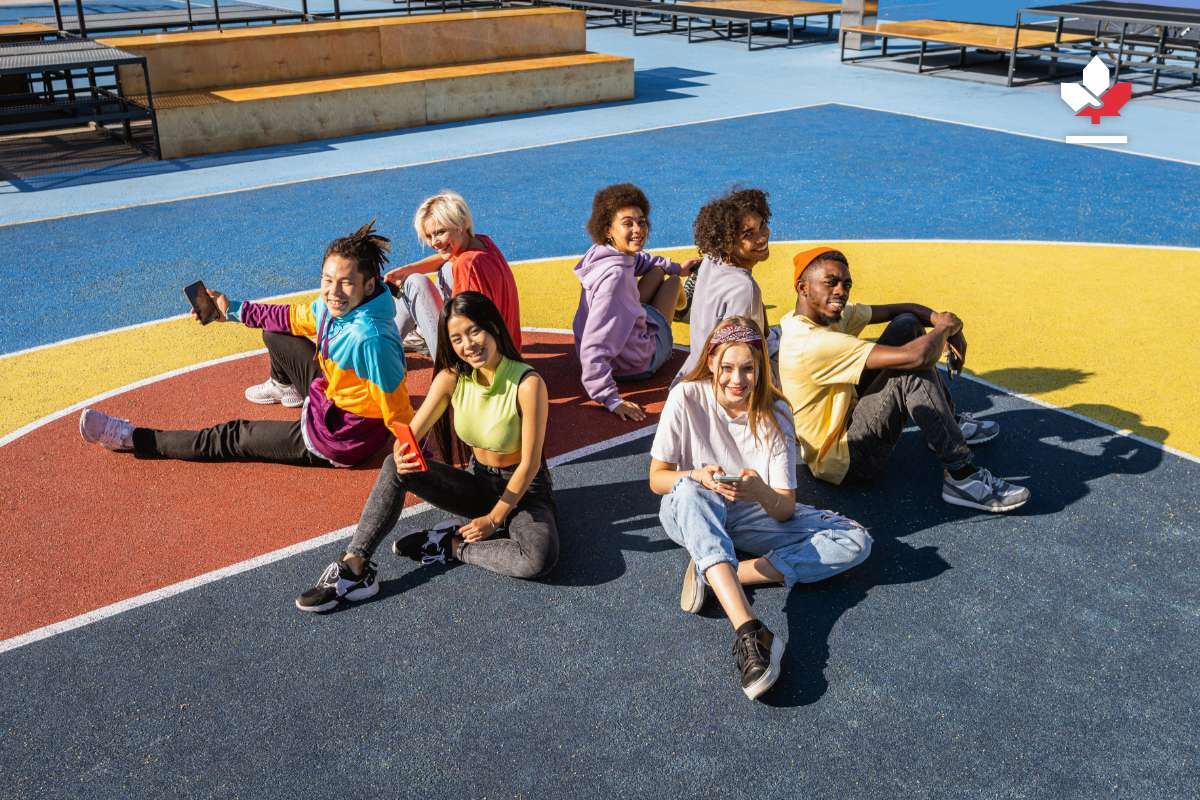Discover the Most Multicultural Cities in Canada
May 5, 2025
|
Canada is celebrated worldwide for its welcoming attitude, inclusive policies, and vibrant cultural mosaic. For those looking to move to Canada, immigrate to Canada, or simply live in Canada, the country’s cities offer a unique blend of opportunities, community, and diversity. From bustling metropolises to hidden gems, Canadian cities are defined by their multicultural neighborhoods, international cuisine, and festivals that celebrate global heritage.
In this blog, we explore some of the most multicultural cities in Canada, highlighting how each thrives as a hub of cultural diversity and inclusion.
Canada’s Multicultural Identity: A Foundation of Inclusion

Canada’s commitment to multiculturalism is enshrined in its policies and culture. Since the 1970s, the country has officially embraced diversity through the Multiculturalism Policy, promoting respect for differences and encouraging immigrants to retain their cultural identities.
Today, over 20% of Canada’s population is foreign-born, making it one of the most diverse nations globally. This openness is reflected in its Canadian cities, where neighborhoods buzz with international markets, places of worship, and community centers that cater to every culture imaginable.
The Most Multicultural Cities in Canada
Whether you are drawn to Canada for career opportunities, education, or quality of life, settling in a multicultural city ensures a smoother transition. Let us dive into the top Canadian cities where diversity thrives.
Toronto: A Global Microcosm
Toronto stands as a beacon of multiculturalism, embodying the essence of a global village. As Canada’s largest city, it’s a magnet for newcomers, with over 51% of its residents born outside the country. This dynamic metropolis thrives on the energy of its 200+ ethnic communities, creating neighborhoods like Kensington Market and Scarborough that pulse with international energy.
How Toronto’s diversity Shapes its Character
Toronto is not just Canada’s largest city—it is a global blueprint for multicultural success. With over half its population born outside the country, Toronto’s identity is a living tapestry of traditions, languages, and innovation. Here, diversity isn’t a buzzword; it’s the heartbeat of the city, influencing everything from street festivals to corporate boardrooms. This cultural alchemy transforms Toronto into more than a place to live in Canada—it becomes a stage where the world’s stories unfold daily. Think:
- Cultural Festivals: The Caribbean Carnival (Caribana) and Taste of the Danforth (Greek festival) draw millions, showcasing the city’s global spirit.
- Ethnic Enclaves: Vibrant communities like Chinatown and Little Jamaica offer authentic cultural experiences, from food to festivals.
- Workforce Diversity: Over half of Toronto’s workforce is foreign-born, driving innovation in industries like tech, finance, and healthcare.
For newcomers, organizations like the Newcomer Settlement Program provide resources to help navigate housing, employment, and language barriers.
Vancouver: Where Cultures Meet Mountains and Ocean
Vancouver seamlessly blends natural beauty with cultural richness, making it a top choice for those who want to live in Canada without sacrificing urban conveniences or outdoor adventures. Nearly 42% of its population speaks a language other than English at home, with strong Chinese, Indian, and Filipino influences shaping its identity. Framed by mountains and ocean, Vancouver’s multiculturalism is as much a part of its landscape as its iconic Stanley Park.
Why Vancouver’s Diversity Thrives
Vancouver’s multicultural fabric is woven into everyday life, from its food scene to its community initiatives. Key highlights include:
- Rich Asian Heritage: Richmond’s Night Market and historic Chinatown reflect the city’s deep ties to Asian cultures.
- Indigenous Partnerships: Vancouver honors First Nations heritage through public art, land acknowledgments, and cultural centers.
- Global Talent Hub: The tech sector (“Silicon Valley North”) and film industry attract professionals from around the world.
This cultural synergy makes Vancouver a model of inclusive urban living.
Montreal: A Bilingual Tapestry of Global Cultures
Montreal captivates with its unique fusion of European charm and multicultural vibrancy. As Quebec’s largest city, it is a bilingual haven where 34% of residents are immigrants, hailing from Haiti, Morocco, Algeria, and beyond. From cobblestone streets in Old Montreal to the bustling Jean-Talon Market, the city’s diversity is woven into its historic fabric, offering newcomers a taste of the world within a distinctly Québécois framework.
Why Montreal Celebrates Multiculturalism
Montreal’s multicultural identity is a blend of old-world elegance and global energy. Key features include:
- Festival Frenzy: The Montreal Jazz Festival and Nuit Blanche highlight the city’s creative fusion of French, Caribbean, and global arts.
- Affordable Diversity: Lower housing costs attract immigrants, fostering neighborhoods like Mile End, where Syrian shawarma shops sit beside French bakeries.
- Language Harmony: While French dominates, workplaces and universities embrace bilingualism, easing transitions for newcomers.
Calgary: Prairie Hospitality Meets Global Ambition
Calgary is a city of contrasts, where prairie hospitality meets cosmopolitan energy. Often overshadowed by eastern hubs, this Alberta gem has emerged as a multicultural hotspot, with over 30% of its population foreign-born. Known for its booming energy sector and proximity to the Rockies, Calgary balances economic ambition with a warm, community-driven spirit that welcomes immigrants seeking growth and connection.
Why Calgary’s Diversity Stands Out
Calgary’s multiculturalism thrives in its ability to merge opportunity with authenticity. Nestled at the foothills of the Rockies, this city balances its rugged Western roots with a forward-thinking ethos, creating an environment where immigrants do not just settle—they flourish. Calgary’s diversity is both a driving force for its economy and a cornerstone of its community spirit, making it a standout destination for those looking to immigrate to Canada and build a life in a city that values their contributions. Standout factors when it comes to diversity include:
- Festival Fusion: The Calgary Stampede includes global cultural showcases alongside rodeo events.
- Immigrant-Driven Economy: Skilled workers from India, the Philippines, and Nigeria fuel sectors like engineering and tech.
- Community Support: Free language classes and career programs through organizations like the Calgary Immigrant Educational Society.
Ottawa: Canada’s Multicultural Capital
As the nation’s capital, Ottawa embodies Canada’s dual English-French heritage while embracing global influences. Nearly 25% of its residents are immigrants, contributing to neighborhoods like Little Italy, Chinatown, and the vibrant Somerset Street. Beyond its political significance, Ottawa thrives as a family-friendly city where diversity is celebrated through festivals, cuisine, and a strong sense of community.
Why Ottawa Excels in Inclusivity
As Canada’s political and cultural heart, Ottawa does not just preach inclusivity—it embodies it. The city’s multiculturalism is woven into its identity as the nation’s capital, blending symbolic gestures of unity with tangible policies that foster belonging for all. From federal institutions championing bilingualism to grassroots festivals celebrating global traditions, Ottawa proves that diversity is not just tolerated but actively celebrated.
- Government Diversity: Federal institutions prioritize hiring bilingual and multicultural talent.
- Cultural Festivals: Winterlude and the Lebanese Festival highlight the city’s global roots.
- Family-Friendly Diversity: Excellent schools and museums like the Canadian Museum of History cater to families of all backgrounds.
Edmonton and Winnipeg: Prairie Powerhouses of Diversity
Edmonton and Winnipeg may not dominate headlines, but their multiculturalism rivals larger cities. Edmonton, home to Canada’s largest Indigenous population, hosts the Heritage Festival—a three-day extravaganza featuring 100+ cultures. Winnipeg, with its strong Filipino and Ukrainian roots, shines through Folklorama, the world’s longest-running multicultural festival. Both cities offer affordability, tight-knit communities, and growing opportunities for those ready to immigrate to Canada.
Why These Cities Embrace Multiculturalism
Though lesser-known compared to Canada’s coastal hubs, Edmonton and Winnipeg embrace multiculturalism through a unique blend of economic opportunity, cultural preservation, and community-driven initiatives that celebrate their diverse populations.
- Edmonton: A hub for oil and gas professionals, paired with vibrant arts and Indigenous cultural initiatives.
- Winnipeg: Affordable housing and a burgeoning tech scene complement its rich cultural tapestry.
Key Tips for Embracing Canada’s Cultural Mosaic

Canada’s multicultural cities are more than just destinations—they are invitations to engage with a world of traditions, languages, and perspectives. Whether you are planning to immigrate to Canada or already call a Canadian city home, embracing this diversity enriches your experience and fosters meaningful connections. Here are some tips on how to immerse yourself in Canada’s cultural mosaic and make the most of life in its vibrant urban centers.
Participate in Local Festivals and Events
Every city in Canada boasts annual festivals that celebrate its multicultural roots. From Toronto’s Caribbean Carnival to Vancouver’s Diwali festivities, these events offer a window into the traditions of diverse communities. Attend cultural parades, try traditional foods, and join workshops to deepen your understanding of the cultures that shape your city.
Explore Ethnic Neighborhoods and Markets
Canada’s multiculturalism is most tangible in its neighborhoods. Wander through Vancouver’s Punjabi Market, Montreal’s Little Italy, or Winnipeg’s Filipino Quarter to experience authentic cuisines, art, and customs. Visiting these areas isn’t just about shopping—it is about connecting with the stories and people behind them.
Learn About Indigenous History and Contributions
Acknowledging Canada’s First Nations, Métis, and Inuit heritage is key to understanding the country’s identity. Cities like Edmonton and Vancouver integrate Indigenous art, history, and land acknowledgments into public spaces. Attend workshops, visit cultural centers, or participate in ceremonies to honor this foundational layer of Canada’s diversity.
Support Multicultural Businesses and Restaurants
From family-run eateries in Calgary’s International Avenue to Toronto’s Kensington Market boutiques, supporting immigrant-owned businesses strengthens local economies and preserves cultural traditions. Make it a habit to try new dishes, shop at ethnic grocery stores, and engage with entrepreneurs sharing their heritage.
Join Community Groups and Language Exchanges
Most Canadian cities have cultural associations, language clubs, and newcomer networks. Join a Filipino cultural group in Winnipeg, practice French in Montreal, or enroll in a Mandarin class in Richmond. These connections help bridge gaps and build friendships across cultures.
Stay Curious and Open-Minded
Multiculturalism thrives when residents actively listen and learn. Ask questions respectfully, attend interfaith dialogues, and read literature by Canadian authors from diverse backgrounds. Small acts of curiosity—like learning to say “hello” in a neighbor’s language—foster inclusivity.
FAQs
Are Canadian Cities Welcoming to Newcomers?
Yes! Canada’s multicultural policies ensure cities prioritize inclusivity. Programs like Toronto’s Newcomer Settlement Program and Calgary’s free language classes help immigrants integrate smoothly.
How do I Find Ethnic Communities in Canadian Cities?
Explore neighborhoods like Vancouver’s Chinatown, Montreal’s Little Italy, or Winnipeg’s Filipino Quarter. Cultural associations and online expat groups also provide connections.
How Can I Celebrate Indigenous Culture in Canadian Cities?
Cities like Vancouver and Edmonton integrate Indigenous heritage through public art, museums (e.g., Museum of Anthropology), and events like National Indigenous Peoples Day.
